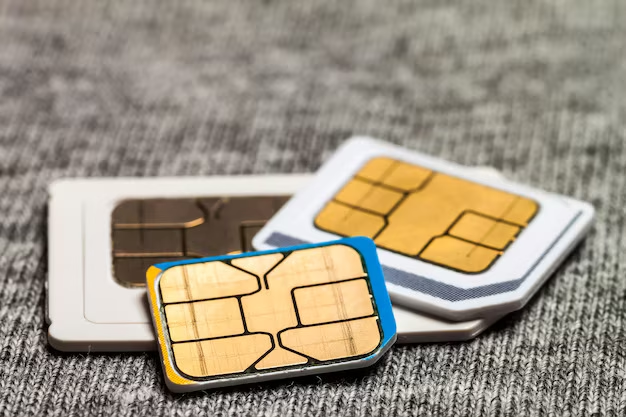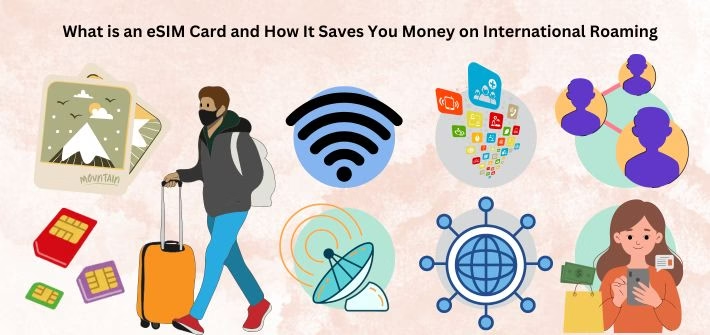Think you landed in a new country and your SIM still works. No hunting for local SIM cards, no overpriced international plans, and definitely no running around at the airport asking for mobile shops. That’s what eSIM technology is solving. And if you’re someone who travels even once a year, this tiny upgrade can save you both money and stress.
In this blog, let’s break down how eSIMs work and why they’re becoming a smart choice for anyone looking to avoid sky-high roaming bills. No jargon, no technical traps—just real talk.
The Old Way: Buying Physical SIMs for Every Country
If you’ve ever travelled abroad, you know the drill.
- You land.
- Turn off mobile data.
- Connect to airport Wi-Fi.
- Search for a SIM store or kiosk.
- Hope the card fits and the network works.
Even worse, if you’re traveling to multiple countries, this process repeats itself. And if you rely on your home provider’s roaming, your bill at the end of the trip can look like a disaster.
People have accepted this as part of international travel for years. But it doesn’t have to be.
Understanding eSIM Cards
In simple terms, you can call “eSIM” as “embedded SIM.” Now there is no need to swap physical cards. You can install eSIM along with your existing SIM.
That means:
- No need to buy a physical SIM every time you travel.
- You can download mobile plans directly onto your phone.
- Your original number stays untouched (if you want).
Think of it like having Netflix profiles. One phone, multiple plans.
Why are eSIM Cards Getting Popular?
Now, mid-range Androids and every new iPhone come with eSIM compatibility. Add to that the rising cost of international roaming, and people are naturally exploring alternatives.

Another reason? There are many people like digital nomads or remote workers who spend a lot of time overseas. They need fast and reliable data to work. The most important thing is that an eSIM offers flexibility.
Real Travel Problems eSIM Solves
Here’s what travellers usually face when they cross borders:
1. Airport Hassles
Local SIM shops often have long queues. If you arrive at odd hours, they may not even be open.
2. Data Shutdown
Most international roaming plans either cut your data or charge insane fees after a small limit. Not ideal if you rely on Google Maps, WhatsApp, or food delivery apps.
3. Country-Hopping Confusion
Europe, Southeast Asia, or Gulf countries—when you’re moving across borders quickly, physical SIMs become a headache.
eSIM lets you skip all this. You land, connect, and continue life as usual.
How Does eSIM Save You Money?
Let’s break it down:
No Roaming Charges
Most people don’t know this—roaming fees are marked up 300–500% by local carriers. With eSIM, you buy a plan directly from local or global providers at base rates. That means no middlemen eating into your budget.
Pay-As-You-Go Options
Traditional SIM cards sometimes force you to take fixed plans. eSIM providers usually let you pay only for what you use—1GB, 5GB, 10GB, etc. That’s a good deal for short trips or light users.
No Expiry Drama
Physical SIMs expire if unused for 90 days or so. You can’t keep topping them up. Some platforms even let you keep unused data for your next trip.
What You Need to Use eSIM
Before you jump in, make sure of these two things:
1. Your Phone Should Be eSIM Compatible
Most newer devices support eSIMs. iPhones from XR and above, Google Pixels, Samsung Galaxy S20 and newer—these are good to go.
2. Your Phone Must Be Unlocked
You may be aware that most of the time smartphones are locked to a specific network. In that case, eSIMs won’t work. You need to unlock your phone first. It is necessary to contact your provider if you are not sure about it.
What About Calls and OTPs?
This is where people usually worry: “If I switch to an eSIM, what happens to my original number?”
Good news—you don’t lose it. Now, your main number will remain active. With a dual SIM setup, you can use (physical + eSIM) run side by side. No worries, you can receive important OTPs while your data flows through a cheaper network.
Common Misunderstandings About eSIM
Let’s clear the air on a few things:
- “eSIM is only for tech geeks.” Not true. It’s designed for everyone.
- “What if I delete the plan by mistake?” Most eSIM platforms let you re-download the plan if you haven’t used it yet.
- “eSIM doesn’t work everywhere.” That’s partly true. But most major travel regions—Europe, Southeast Asia, North America—have plenty of coverage. Moreover, this list is growing every month.
Final Thoughts
We understand that you love to travel. And we don’t want international roaming to feel like a punishment. You deserve better than overpaying for data or wasting time finding a SIM shop in a new city. With an eSIM, you get control, flexibility, and real savings — all without stepping into a store or dealing with paperwork. Switch networks with a few taps. Stay connected across borders. If you’re still wondering what is an eSIM card, the answer is simple: it’s your ticket to smoother, cheaper travel.

